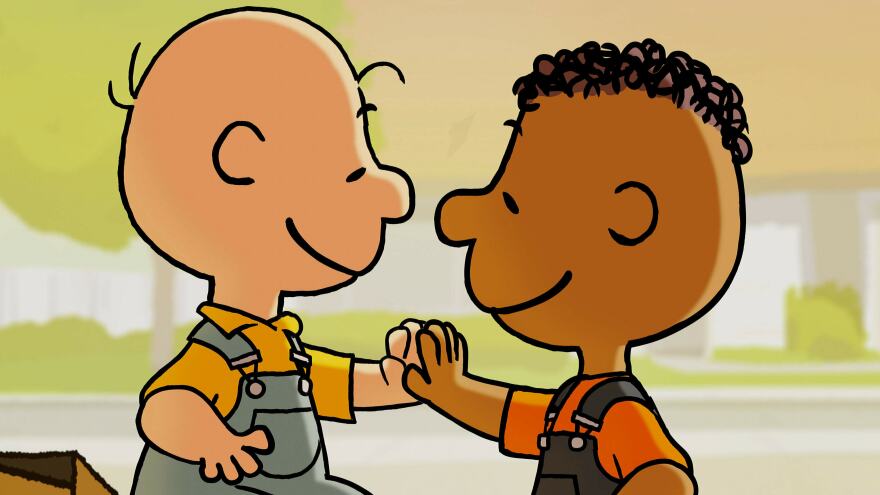Apple TV+ is streaming the origin story of the first Black character in the Peanuts comic strip.
The special is called Snoopy Presents: Welcome Home, Franklin. It's about how Franklin met Charlie Brown, Linus, Lucy, Snoopy and the rest of the Peanuts gang.
"A Franklin special is really overdue," said Craig Schulz, the co-writer of the show and son of Peanuts creator Charles Schulz, in an interview with Morning Edition.
Charles Schulz first drew Franklin in 1968 after receiving a letter from a white Los Angeles schoolteacher named Harriet Glickman. She reached out to Schulz following the assassination of Martin Luther King Jr.

She wrote, "I've been asking myself what I can do to help change those conditions in our society which led to the assassination."
Glickman suggested that adding a Black character to the Peanuts cast could help change the "vast sea of misunderstanding, fear, hate and violence."
Schulz wrote back and said he'd been thinking about adding a Black character but was concerned that it might be seen as "patronizing."
Craig Schulz says his father was unsure how to move forward.
"He didn't know much about the Black generation at that time other than what you saw on TV," Craig Schulz said. "He had some Black friends, but didn't think that was enough to take on the responsibility of creating a Black character."
But Charles Schulz figured it out.

A few months later, he wrote to Harriet Glickman, telling her to keep an eye out for a Peanuts strip publishing in late July. He said, "I have drawn an episode that I think will please you."

The strip shows Franklin rescuing Charlie Brown's runaway beachball. The image was powerful — a Black child and white child together on a beach at a time when many public beaches were segregated.
Welcome Home, Franklin re-creates that meeting on the beach and marks the beginning of his friendship with Charlie Brown.
The Apple TV+ special also revisits another key moment in Franklin's history.
A few years after his debut in print, Franklin made his first television appearance. In 1973, he was one of the dinner guests in A Charlie Brown Thanksgiving.

But one scene in the animated Thanksgiving special doesn't sit well with audiences today. It shows Franklin sitting alone on one side of the dinner table, while all of the white characters sit on the other side.
"It's so very easy to get offended or upset," said Robin Reed, who was 11 years old when he performed the voice of Franklin.
He told MSNBC in 2021, "We have to remember that at that time, that actually represented progress."
But the producers of Welcome Home, Franklin wanted a do-over. Director Raymond S. Persi said, "We were able to re-create that scene and turn something that was this unfortunate controversy into a moment for people to talk about."

This time, the dinner scene takes place in a pizza restaurant. Franklin again sits by himself on one side of the table. The white children sit on the other side, but Linus stands up and says, "Hey Franklin, we saved you a seat over here. Come join us."
"The characters are real to me, they're real little kids," Persi said. "What's cool is now we get to know Franklin a little better and we get a chance to see the other characters kind of in a new light because we get them through his eyes."
Copyright 2024 NPR. To see more, visit https://www.npr.org.


